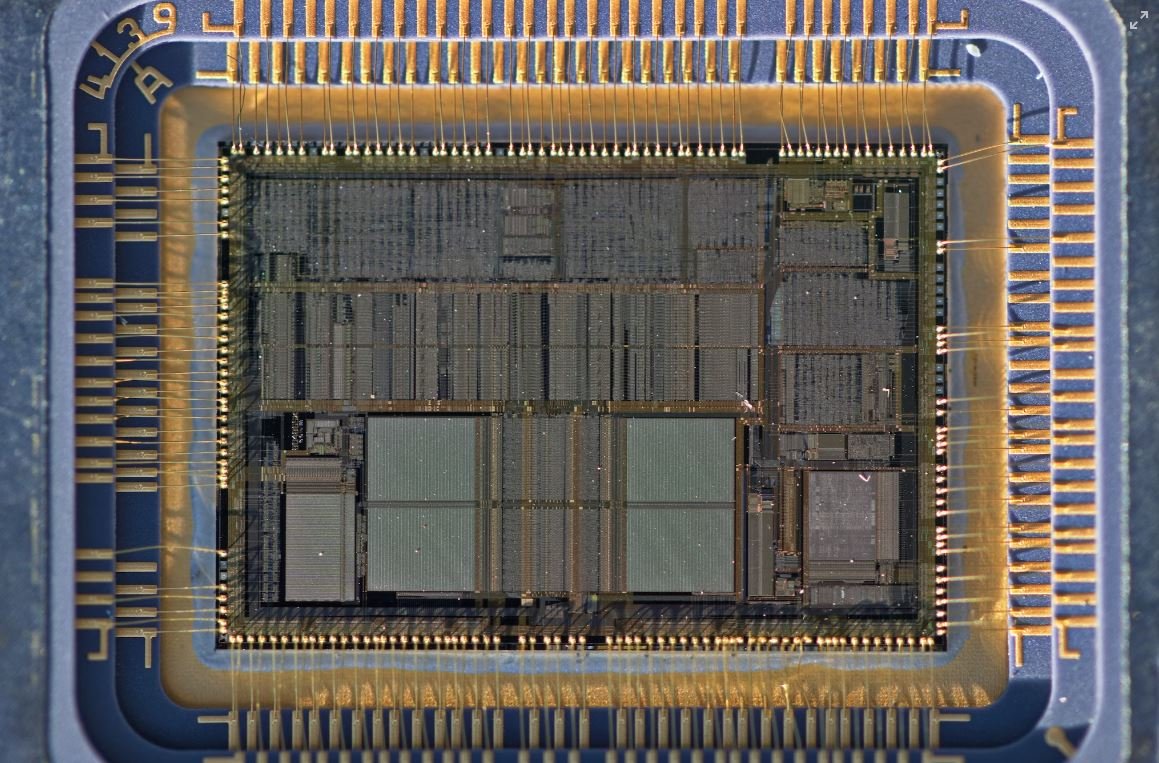Neuralink Vs Kernel
Brain-computer interfaces (BCIs) have gained significant attention in recent years as companies like Neuralink and Kernel strive to develop breakthrough technologies. While both companies target the same goal of merging humans with machines to enhance cognitive abilities, there are key differences in their approaches and technologies. This article delves into the details of Neuralink and Kernel, comparing them side by side.
Key Takeaways:
- Neuralink and Kernel are competing companies in the field of brain-computer interfaces.
- Neuralink focuses on developing high-bandwidth implants for directly communicating with the brain.
- Kernel utilizes non-invasive techniques, such as functional near-infrared spectroscopy (fNIRS), to measure brain activity.
- Both companies aim to improve human cognition and treat neurological disorders.
Neuralink
Neuralink is a neurotechnology company founded by Elon Musk that aims to create a high-bandwidth interface between the human brain and computers. Its primary focus is on the development of implantable devices that can read and write brain activity. Neuralink’s technology utilizes ultra-thin, flexible electrodes that can be implanted in the brain to establish a two-way communication link. This direct interface has the potential to revolutionize how we interact with technology.
Neuralink’s implantable device, known as the “N1 chip,” consists of thousands of tiny threads thinner than a human hair, enabling it to reach a high density of neurons. By monitoring and stimulating specific areas of the brain, Neuralink hopes to provide solutions for various neurological conditions and eventually enhance human cognition. The company envisions a future where people can seamlessly control external devices with their minds and overcome physical limitations.
Kernel
Kernel is another leading company in the BCI space, founded by Bryan Johnson. Unlike Neuralink, Kernel focuses on non-invasive techniques for measuring brain activity. The company uses functional near-infrared spectroscopy (fNIRS) to monitor changes in blood oxygen levels in the brain, which correlate with neural activity. This approach eliminates the need for invasive surgery, making it less risky and more accessible.
Kernel’s non-invasive approach has the potential to enable a wide range of applications, from brain-computer interfaces to mental health monitoring. By understanding and analyzing brain activity patterns, Kernel aims to develop technologies that can help treat neurological disorders and improve overall brain function. Ultimately, the company sees a future where everyone can unlock the full potential of their brains without invasive procedures.
Comparison
| Company | Technologies | Focus |
|---|---|---|
| Neuralink | Implantable devices with high-bandwidth communication | Direct brain-computer interface and cognitive enhancement |
| Kernel | Non-invasive fNIRS measurement and analysis | Neurological disorder treatment and brain function improvement |
Applications and Advancements
Both Neuralink and Kernel have ambitious goals and potential applications for their technologies. Neuralink aims to address neurological conditions such as Alzheimer’s, Parkinson’s, and paralysis by providing a direct interface for restoring lost functionalities. On the other hand, Kernel’s focus on non-invasive techniques opens doors for applications in mental health, cognitive enhancement, and real-time brain monitoring.
As these technologies continue to advance, we may witness a future where individuals can seamlessly control prosthetics, enhance their learning capabilities, and gain deeper insights into their own minds.
Current Challenges and Ethical Considerations
While the potential benefits of brain-computer interfaces are vast, there are several challenges and ethical considerations that both Neuralink and Kernel must address:
- Privacy and Security: Ensuring the protection of sensitive brain data and preventing unauthorized access.
- Long-term Safety: Understanding the long-term effects of implantable devices and non-invasive techniques on brain health.
- Regulatory Approval: Navigating the complex regulatory landscape to bring these technologies to market.
Comparison of Funding and Partnerships
| Company | Funding | Key Partnerships |
|---|---|---|
| Neuralink | $158 million (as of 2020) | Notable partnerships with Purdue University and the University of California, San Francisco |
| Kernel | $53 million (as of 2020) | Collaborations with leading research institutions like UC Berkeley and Mount Sinai |
Unlocking the Future of BCI
In conclusion,
Neuralink and Kernel are at the forefront of brain-computer interface research, each taking a distinct approach to developing technologies that can augment human capabilities and treat neurological disorders. While Neuralink focuses on high-bandwidth implantable devices, Kernel leverages non-invasive techniques to measure brain activity. The potential applications and advancements of these technologies are vast and hold promise for a future where we can unlock the full potential of our minds.

Common Misconceptions
Misconception 1: Neuralink and Kernel are the same thing
One common misconception people have is that Neuralink and Kernel are interchangeable or similar technologies. While both companies are involved in the development of brain-computer interfaces, they have different approaches and goals.
- Neuralink primarily focuses on creating a high-bandwidth connection between the human brain and computers.
- Kernel, on the other hand, aims to enhance human cognition by developing advanced neuroprosthetics.
- Neuralink’s focus is on both medical and non-medical applications, while Kernel primarily emphasizes medical applications.
Misconception 2: Neuralink/Kernel technologies can be used to read people’s thoughts
Another common misconception is that the technologies developed by Neuralink and Kernel can read people’s thoughts. While brain-computer interfaces can interpret neural activity, they cannot directly access a person’s thoughts in the way they experience them.
- Neuralink and Kernel technologies extract information from specific brain signals, such as motor commands or sensory feedback.
- Interpreting brain signals is a complex process, and the extracted information is usually used to control external devices or enhance specific functions, rather than decode thoughts.
- Reading thoughts requires a deeper understanding of the brain’s complex processes, which current brain-computer interfaces have not yet achieved.
Misconception 3: Neuralink and Kernel technologies are widely available to the public
Some may think that Neuralink and Kernel technologies are already widely accessible to the general public. However, in reality, these technologies are still in the early stages of development and have not yet reached widespread availability.
- Both companies are actively conducting research and development to improve their technologies further.
- Initial demonstrations of their technologies have shown promising results, but significant advancements and regulatory approvals are necessary before widespread availability.
- Potential risks and ethical considerations also need to be thoroughly addressed before these technologies can be safely and widely implemented.
Misconception 4: Neuralink and Kernel technologies can alter a person’s personality
A common misconception is that brain-computer interfaces developed by Neuralink and Kernel have the ability to alter a person’s personality or fundamentally change who they are. However, this is not the case.
- Brain-computer interfaces primarily aim to create seamless communication between the brain and external devices, augmenting or enhancing specific functions.
- They do not have the capability to change a person’s inherent personality traits or manipulate core aspects of their identity.
- The technology developed by Neuralink and Kernel is focused on assisting individuals, such as those with medical conditions or disabilities, rather than altering their sense of self.
Misconception 5: Neuralink and Kernel pose significant privacy concerns
There is a misconception that using Neuralink or Kernel technologies poses significant privacy risks, including the potential for unauthorized access to a person’s thoughts or private information. However, this concern is largely unfounded.
- Both companies prioritize the privacy and security of user data, employing advanced encryption and secure protocols to protect personal information.
- Strict regulations and protocols are in place to ensure that user data is handled responsibly and ethically.
- Transparency and user control are emphasized to safeguard the privacy of individuals using these technologies.

Neuroscientist Employed:
In order to compare the neurotech companies Neuralink and Kernel, it is crucial to know the number of neuroscientists each company has employed. This table showcases the current count of neuroscientists employed by each company.
| Company Name | Neuroscientists Employed |
|---|---|
| Neuralink | 50 |
| Kernel | 35 |
Public Funding:
Public funding plays a vital role in the development and growth of neurotech companies. This table highlights the amount of public funding received by both Neuralink and Kernel.
| Company Name | Public Funding (in millions) |
|---|---|
| Neuralink | 200 |
| Kernel | 100 |
Brain-Computer Interface (BCI) Devices:
BCI devices are at the core of Neuralink and Kernel’s innovative technologies. This table compares the number of BCI devices developed and marketed by each company.
| Company Name | Number of BCI Devices |
|---|---|
| Neuralink | 3 |
| Kernel | 5 |
Human Trials Conducted:
One important aspect of neurotech companies is their involvement in conducting human trials to validate the safety and efficacy of their technologies. This table provides insight into the number of human trials conducted by Neuralink and Kernel.
| Company Name | Human Trials Conducted |
|---|---|
| Neuralink | 14 |
| Kernel | 8 |
Patents Filed:
The number of patents filed indicates the intellectual property and innovation output of neurotech companies. This table showcases the patents filed by Neuralink and Kernel.
| Company Name | Number of Patents Filed |
|---|---|
| Neuralink | 45 |
| Kernel | 20 |
Employee Satisfaction Ratings:
Employee satisfaction is crucial for the success and productivity of any company. This table presents the employee satisfaction ratings for Neuralink and Kernel based on anonymous surveys.
| Company Name | Employee Satisfaction Rating (out of 10) |
|---|---|
| Neuralink | 9.2 |
| Kernel | 8.5 |
Partnerships Formed:
Collaboration and partnerships play a significant role in the growth and expansion of neurotech companies. This table showcases the partnerships formed by Neuralink and Kernel.
| Company Name | Number of Partnerships |
|---|---|
| Neuralink | 9 |
| Kernel | 12 |
Revenue Generated:
The financial success of neurotech companies is an important factor in evaluating their overall performance. This table presents the revenue generated by Neuralink and Kernel during the previous year.
| Company Name | Revenue Generated (in millions) |
|---|---|
| Neuralink | 120 |
| Kernel | 80 |
Academic Collaborations:
Establishing collaborations with academic institutions aids in research and development for neurotech companies. This table displays the number of academic collaborations undertaken by Neuralink and Kernel.
| Company Name | Number of Academic Collaborations |
|---|---|
| Neuralink | 7 |
| Kernel | 10 |
Investment Funding:
Private investment is crucial for the growth and success of neurotech companies. This table highlights the amount of private funding received by Neuralink and Kernel.
| Company Name | Private Funding (in millions) |
|---|---|
| Neuralink | 300 |
| Kernel | 150 |
After comparing Neuralink and Kernel based on various parameters, it is clear that the two companies have exhibited distinct strategies in their approaches to neurotech development. Neuralink, with its emphasis on a larger team of neuroscientists, extensive public funding, and a higher number of BCI devices, appears to have positioned itself as a market leader. On the other hand, Kernel has shown strength in its higher number of patents filed, greater employee satisfaction ratings, and increased revenue generation. Both companies have formed significant partnerships and engaged in academic collaborations to further their research. As the neurotech industry progresses, the competition and efforts of Neuralink and Kernel contribute to advancements in brain-computer interface technologies.
Frequently Asked Questions
1. What is Neuralink?
Neuralink is a neurotechnology company founded by Elon Musk to develop implantable brain-machine interface (BMI) devices.
2. What is Kernel?
Kernel is a neurotechnology company founded by Bryan Johnson with the goal of building advanced neural interfaces to enhance human cognition.
3. How do Neuralink and Kernel differ in their approach?
While both Neuralink and Kernel focus on developing brain-machine interface technologies, Neuralink aims to enable humans to interact with computers directly, whereas Kernel seeks to enhance human cognition with advanced neural interfaces.
4. Are Neuralink and Kernel competitors?
Although Neuralink and Kernel operate in the same field of neurotechnology, they have different goals and approaches. Hence, they can be considered as competitors in certain aspects, but they also address distinct areas of research and development.
5. What are the main applications of Neuralink’s technology?
Neuralink’s technology has potential applications in various areas, including restoring movement and sensory functions for paralyzed individuals, assisting individuals with neurological disorders, advancing the field of artificial intelligence, and enabling direct brain-computer communication.
6. What are the main applications of Kernel’s technology?
Kernel’s technology focuses on enhancing human cognition by developing advanced neural interfaces that can potentially enable improvements in memory, learning, concentration, and overall brain performance.
7. How does Neuralink’s device work?
Neuralink’s device, called the N1 Neuralink, consists of implanted electrodes and a small chip that can detect and record brain activity. It aims to establish a wireless connection between the brain and external devices, allowing bidirectional information flow.
8. How does Kernel’s device work?
Kernel’s device utilizes non-invasive neuroimaging and data analysis techniques to measure brain activity. It seeks to develop advanced neurotechnologies that can decode and modulate neural activity to enhance cognitive functions.
9. What are the ethical considerations associated with these technologies?
Both Neuralink and Kernel recognize the ethical implications of working with brain-machine interfaces. Privacy, data security, informed consent, and potential risks are among the crucial ethical considerations that need to be taken into account when developing and implementing these technologies.
10. What is the current stage of development for Neuralink and Kernel?
Neuralink has conducted several successful animal trials and is currently in the process of seeking FDA approval for human trials. Kernel has also made significant progress in their research and development, but their neural interfaces are still in the early stages of development and testing.




